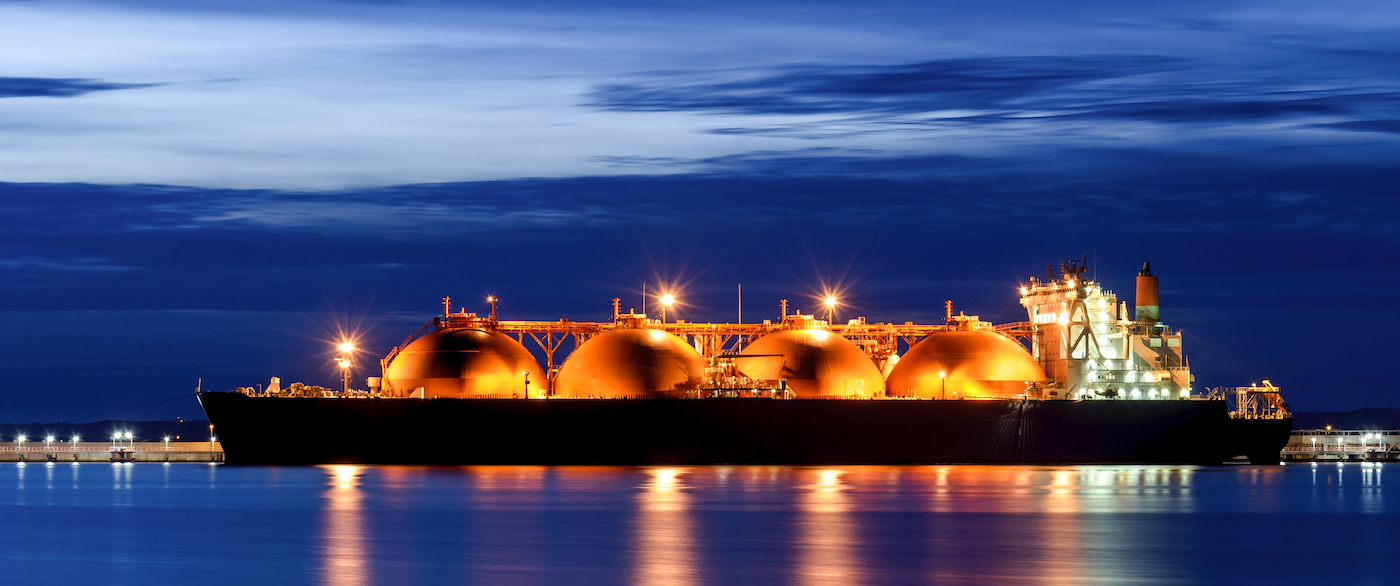Liquefied natural gas (LNG) export capacity has really taken off in the past decade, with big players like Australia and the United States getting into the game. More than 500 billion cubic meters of LNG were exported globally in 2021, up 44% since 2016, according to the BP Statistical Review. But with fast growth set to continue, there is a growing urgency to reduce the carbon emissions of LNG production facilities.
Heavy-duty gas turbines operating on natural gas lie at the heart of an LNG facility, providing power and compression to transform large volumes of natural gas to a liquid. If those turbines could run instead on lower-emissions hydrogen, at the level of reliability the LNG industry requires, that would be a big win. A new agreement between GE and Shell Global Solutions has its eye on this very outcome.
GE, leveraging its expertise in power systems and hydrogen, will work to develop a combustion retrofit solution for heavy-duty B- and E-class turbines to burn hydrogen as a potential pathway toward the decarbonization of Shell’s LNG supply projects. And Shell, also long involved in hydrogen development and applications, is evaluating the development of on-site production of hydrogen. The goal is to reduce the largest source of emissions at an LNG facility. And that’s crucial, given that the global LNG segment is expected to roar in the years ahead, nearly doubling in size by 2040.
“This is a big play toward decarbonization,” says Fabien Codron, product manager for hydrogen on the heavy-duty gas turbine portfolio at GE. Codron points to a common challenge for hydrogen expansion: bringing steady hydrogen supply to actual locations of demand. Shell’s Blue Hydrogen Process is a leading technology that can deliver the lowest-carbon-intensity fuel of its kind, with technologies and building blocks tested and commercially proven at a large scale, and that have been used in various industries for many decades. Potential solutions like these are what encourage a power-sector player like GE to run hard at the hydrogen opportunity.
Retrofitting natural gas turbines to run on hydrogen takes some experimentation to get all the moving parts working in harmony. The original combustion system must be swapped for a new one. This new combustor will also be able to be retrofitted to Frame 6B and Frame 7E gas turbines in power generation applications that are also currently running on natural gas fuel. But the real challenge comes in controlling nitrogen oxide (NOx) emissions. Yes, hydrogen doesn’t produce CO2 when used as a fuel, but burning it at high temperatures creates NOx. “As I burn more hydrogen, my CO2 and CO levels go down. But because the flame is more reactive and burns a little hotter, I create more NOx,” explains Jay Bryant, 7E gas turbine product leader at GE. Fortunately, GE has a number of technologies for NOx control, the most important of which is its dry low-NOx solution, or DLN pre-combustion technology, which helps keep NOx emissions restricted to 25 parts per million, the World Bank standard. It also helps that the B- and E-class turbines burn at lower temperatures..
With more than 50 years’ experience in the sector, Shell is a key player in LNG supply operations across the globe. The operational challenge, explains Bryant, is to put all this new technology together while also maintaining reliability. “In a perfect world, LNG plants run for a year or more, without a shutdown,” says Bryant. That means a retrofitted gas turbine, which uses just a touch of natural gas to get started in the first few minutes, would need to operate just as reliably on hydrogen. As Bryant explains, with ships loading up and supercooled natural gas production going round the clock, operators cannot afford any unplanned downtime.
One of the unique capabilities of the GE DLN solution is that it can operate without water. And that’s crucial when so many world LNG facilities are in arid regions. “If I’m in places where I don’t have a water or steam system to control emissions. Where am I going to get the necessary quantities of water? So, while we have 100% capable solutions today that rely on water or steam, having a 100% capable dry solution is essential to help decarbonize the LNG industry,” says Bryant.
The collaboration between Shell and GE is about putting together a whole package: reliability, low emissions, and an ability to put hydrogen in the driver’s seat, even in challenging regions where water is a scarce resource. Codron adds that Shell needs “a reliable combustion solution, with high availability, and low emissions from GE. And this agreement gets on a path to solve that problem.”
Top: A ship carrying liquefied natural gas. Credit: Shutterstock
